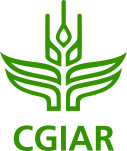Leveraging Ontologies to Unveil the Dynamics of Change at CGIAR
Published on: February 1, 2024, Submitted by Antoine Millet on: January 19, 2024
This blog discusses the use of ontologies to simplify complex systems and visualize change in organizational contexts, particularly within the Theory of Change framework. Ontologies, structured representations of knowledge, create a network of classes and relationships, providing a shared understanding of terms and facilitating data integration. In Monitoring, Evaluation, and Learning (MEL), ontologies enhance the precision and clarity of initiatives, capturing interdependencies and improving understanding of program dynamics. They contribute to a common language, fostering communication among stakeholders and streamlining the evaluation process.
World-Wide Semantic Web of Agriculture Knowledge - Scientific Figure on ResearchGate. Available from: https://www.researchgate.net/figure/Foundational-agricultural-crop-ontology-in-Agropedia-Indica_fig2_257737867 [accessed 19 Jan, 2024]
Characterizing change in a given sector is a challenging exercise. Imagine being able to visualize the intricate web that characterizes the effect of change in a given domain, where every actor, action, entity and their interrelations are summarized in a straightforward, organized visual manner. Wouldn’t that be helpful?
Ontologies are able to do just that, simplifying complex systems by creating a network of classes linked to one another and characterized by their defined properties. In this blog post we will try to explain how ontologies can be helpful for organizational purposes.
Understanding Theory of Change
The Theory of Change is an essential framework for companies, non-profit, research and development actions in social context. It serves as the guiding light, showing the path to take from inputs to the transformation we aim to bring. But the path is seldom straightforward, especially when working in complex and challenging environments. The Theory of Change maps out the pathways from inputs to outcomes and impacts, helping organizations like CGIAR design and implement more effective projects and initiatives. However, translating this theoretical framework into practical action and monitoring can be challenging, especially given the multifaceted and ever-evolving nature of UN SDG-related NGO systems.
Understanding Ontologies
Ontologies are structured representations of knowledge, akin to a roadmap that can help navigate the intricate landscape of a given domain. Imagine bubbles (called “Entities” or “Class”; e.g. a Company) that are linked to each other by defined relationships (called “Object properties”; e.g. Company A employs Company B). The Entity or Class bubbles also have properties that add a layer of characterization (called “Data properties”, e.g.: Name of Company A, date of creation of Company A).
Together they form what we call an ontology.
By categorizing and linking concepts, ontologies provide a shared understanding of the terms, relationships, and processes involved. They are facilitating data integration, knowledge sharing, and decision support. Our stakeholders can have a better understanding of the process that goes along with any CGIAR initiatives.
Ontologies’ role in Monitoring, Evaluating and Learning
In the realm of Monitoring, Evaluation, and Learning (MEL) within organizations like ICARDA, the application of ontologies brings a visual, user-friendly dimension to the way we conceptualize and articulate our Theory of Change.
Ontologies, by providing a structured and standardized framework for representing knowledge and relationships, enhance the precision and clarity of our initiatives. Through ontological models, we can capture and define the intricate interdependencies between variables, outcomes, and impacts in a more nuanced manner. This not only facilitates a deeper understanding of the complex dynamics within our programs but also empowers our MEL team to systematically organize, share, and analyze a past or ongoing initiative.
Ontologies contribute to the creation of a common language and taxonomy, fostering improved communication among stakeholders and enabling a more cohesive approach to evaluating and learning from the initiatives. By leveraging ontological principles, we can elevate the efficiency and reliability of result frameworks and stakeholder maps, ensuring analyses are not only comprehensive but also aligned with a shared and enriched understanding of our organization's goals and outcomes.
About the Author’s experience
As a member of the Research Software Development sub-team within the MEL platform, my role involved acquiring in-depth knowledge of ontologies and actively participating in the development of one specifically tailored to M&E terms, with a primary focus on those integral to Theory of Change frameworks. This experience has allowed me to witness firsthand the transformative power of ontologies in unraveling the intricate dynamics of change within complex systems.
The MEL team at ICARDA, embodies a commitment to excellence in online platforms for research and knowledge management. This award-winning team facilitates multi-stakeholder collaboration by enhancing planning, management, monitoring, evaluation, reporting, and data sharing across diverse program and project activities. By pooling and organizing data in a centralized platform, the MEL team accelerates decision-making processes, fostering a more informed and collaborative approach within and among partner organizations. It has been a privilege to be part of a team that champions innovation and effectiveness in the pursuit of positive social change.
Acknowledgement
Thank you to my team at MEL-ICARDA for providing me with relevant advices and much needed help in writing this blog


